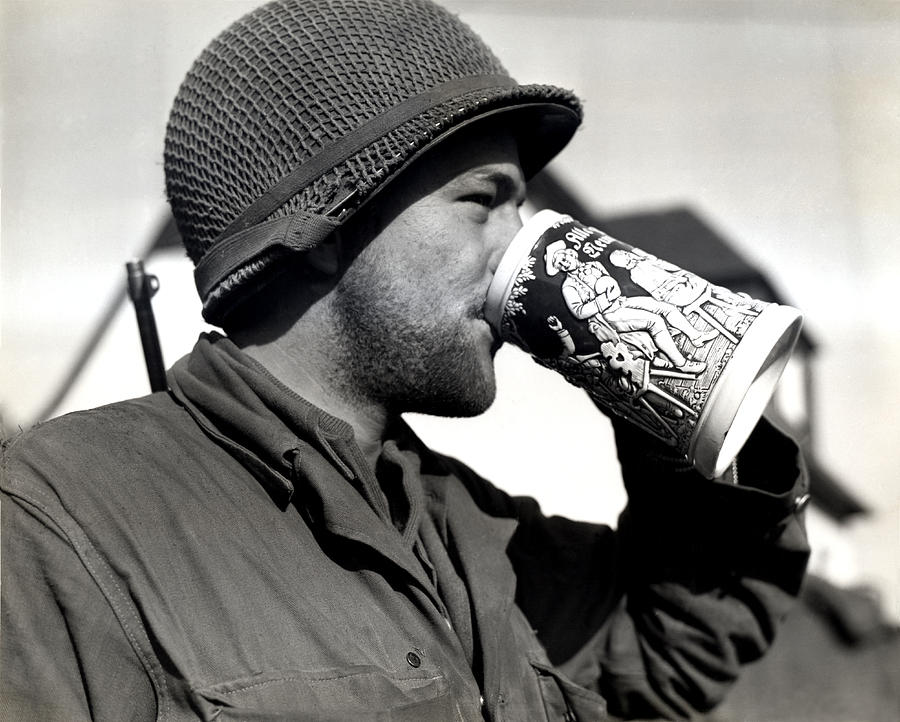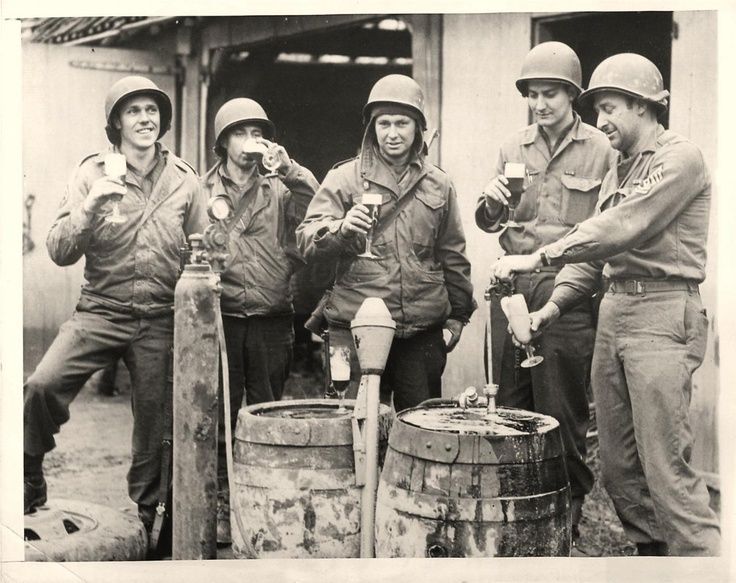Introduction: World War II, often remembered for the heroic sacrifices and struggles on the battlefield, had a lesser-known but significant impact on the American beer brewing industry. At a time when the world was in turmoil, and the United States was once again sending its armed forces abroad to confront a new German enemy, the brewing industry experienced a remarkable revival. The timing couldn’t have been better, as the brewing industry was about to play a significant role in supporting the war effort due to the end of Prohibition.
In 1933, a month after Franklin Delano Roosevelt’s inauguration, the U.S. Congress passed the Twenty-First Amendment, which aimed to repeal the Eighteenth Amendment. FDR signed the Cullen-Harrison Act, legalizing the sale of beer with up to 3.2 percent alcohol by weight. This act took effect on April 7, 1933, nine months before the formal end of Prohibition on December 5 with the ratification of the Twenty-First Amendment. As Americans celebrated, conflict on the horizon turned into the looming shadow of World War II.
Eight years after the repeal of Prohibition, the United States once again sent its armed forces to fight a new German enemy. The military had conflicting views on providing alcohol to its troops, with some seeing remnants of Prohibition as a sign of morality and temperance, while others believed that alcohol was necessary for entertainment and solace. Ultimately, the U.S. military chose to provide alcohol. Just as in manufacturing and food production, the government instructed the brewing industry to allocate 15 percent of its products for the military to ensure that beer could be supplied to the troops.
Brewers gladly complied with this request and used the opportunity to promote themselves as patriots, emphasizing the “nutritional” aspects of their beer due to the vitamin B content in brewer’s yeast. Unlike during World War I, their efforts to highlight their contributions to the war met with success, and the U.S. government declared beer brewing an essential wartime industry. Brewers saw the war as an opportunity to not only rebuild an industry damaged by anti-German propaganda and 13 years of Prohibition but also to tap into a new, important consumer base: American GIs. Soldiers, sailors, and marines were generally happy to receive their beer rations. To address concerns from “dry” politicians, the government limited the alcohol by volume (ABV) of beer sold to American service members to 3.2 percent. This 3.2 percent American lager became the beer of choice for the U.S. Military.
The military’s distribution of beer to American service members had a long-term impact on beer consumption. It was seen as an opportunity to cultivate a taste for beer in the millions of young men who would eventually become the largest beer-consuming section of the population. The preference for beer, particularly German-style lagers, remained strong among returning GIs. German immigrants had a profound influence on American beer brewing. Many of them had brought the German tradition of beer brewing with them to the United States, and this influence continued to shape the industry. German-style lagers are appreciated for their adherence to tradition, balance, and drinkability. Whether you’re enjoying a classic German Pilsner, a Helles, or a Märzen, these lagers provide a taste of the rich brewing heritage and craftsmanship associated with German beer culture. The legacy of German migrants can be seen in some of the top beer breweries in the country, including Anheuser-Busch, Pabst, Miller, and Coors.
German-style lagers are a category of beers that are known for their adherence to traditional German brewing methods and ingredients. These lagers typically feature a clean, crisp, and balanced flavor profile, making them popular choices for beer enthusiasts. Here are some key characteristics of German-style lagers:
- Ingredients: German-style lagers are brewed using high-quality malted barley, hops, yeast, and water. German malt varieties, such as Pilsner malt, are often used, imparting a distinctive malt sweetness and a pale color to the beer.
- Yeast: The yeast strains used in German-style lagers are typically lager yeast strains, which ferment at cooler temperatures, resulting in a clean and smooth flavor profile. These yeast strains contribute to the beer’s signature clarity.
- Hops: German-style lagers can vary in their hop bitterness and aroma, but they tend to be more balanced and less hop-forward than many other beer styles. Noble hop varieties like Saaz, Hallertau, and Tettnang are often used, adding a mild, floral, or herbal note to the beer.
- Crisp and Clean: German-style lagers are known for their crisp and clean taste. They often have a moderate to high level of carbonation, giving them a refreshing quality. The malt and hop flavors are well-balanced, and the finish is typically dry.
- Common Substyles:
- Pilsner: A pale, highly carbonated lager with a prominent hop bitterness and a slightly grainy, biscuity malt character. German Pilsners are known for their hoppy bite.
- Helles: A bright and pale lager with a well-rounded malt sweetness, minimal bitterness, and a clean, smooth finish. Helles is often referred to as a Munich-style lager.
- Märzen: A medium-bodied, amber lager with a balanced malt sweetness and mild hop bitterness. Märzen is traditionally brewed for Oktoberfest celebrations.
- Traditional Brewing Regions: Germany is the most famous producer of German-style lagers, with many renowned breweries in Bavaria and other regions. However, these styles have also been embraced by craft breweries worldwide.
- Food Pairing: German-style lagers are versatile and pair well with a wide range of foods. They complement dishes like sausages, pretzels, schnitzel, and seafood. The crispness and balance of these lagers make them an excellent choice for beer and food pairings.
In the wake of World War II, the American brewing industry experienced a resurgence of “Old World” brewing traditions. Beer gardens, which had been an integral part of German brewing culture, made a comeback, providing communal gathering spaces for towns and cities across the nation. Craft brewing, with its focus on quality and variety, gained momentum in the late 20th century, breathing new life into the industry.
*The views and opinions expressed on this website are solely those of the original authors and contributors. These views and opinions do not necessarily represent those of Spotter Up Magazine, the administrative staff, and/or any/all contributors to this site.




